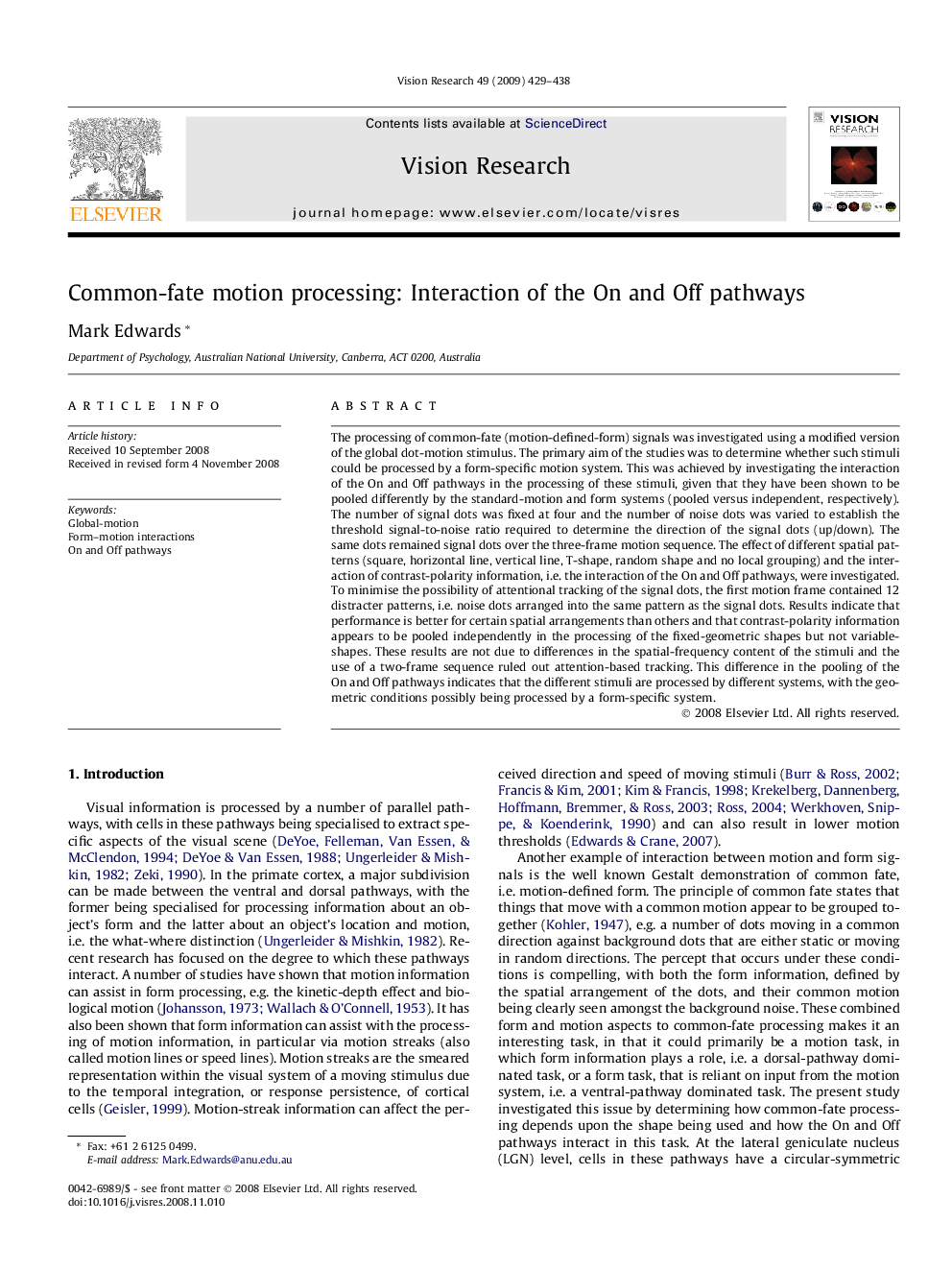| Article ID | Journal | Published Year | Pages | File Type |
|---|---|---|---|---|
| 4034852 | Vision Research | 2009 | 10 Pages |
The processing of common-fate (motion-defined-form) signals was investigated using a modified version of the global dot-motion stimulus. The primary aim of the studies was to determine whether such stimuli could be processed by a form-specific motion system. This was achieved by investigating the interaction of the On and Off pathways in the processing of these stimuli, given that they have been shown to be pooled differently by the standard-motion and form systems (pooled versus independent, respectively). The number of signal dots was fixed at four and the number of noise dots was varied to establish the threshold signal-to-noise ratio required to determine the direction of the signal dots (up/down). The same dots remained signal dots over the three-frame motion sequence. The effect of different spatial patterns (square, horizontal line, vertical line, T-shape, random shape and no local grouping) and the interaction of contrast-polarity information, i.e. the interaction of the On and Off pathways, were investigated. To minimise the possibility of attentional tracking of the signal dots, the first motion frame contained 12 distracter patterns, i.e. noise dots arranged into the same pattern as the signal dots. Results indicate that performance is better for certain spatial arrangements than others and that contrast-polarity information appears to be pooled independently in the processing of the fixed-geometric shapes but not variable-shapes. These results are not due to differences in the spatial-frequency content of the stimuli and the use of a two-frame sequence ruled out attention-based tracking. This difference in the pooling of the On and Off pathways indicates that the different stimuli are processed by different systems, with the geometric conditions possibly being processed by a form-specific system.
